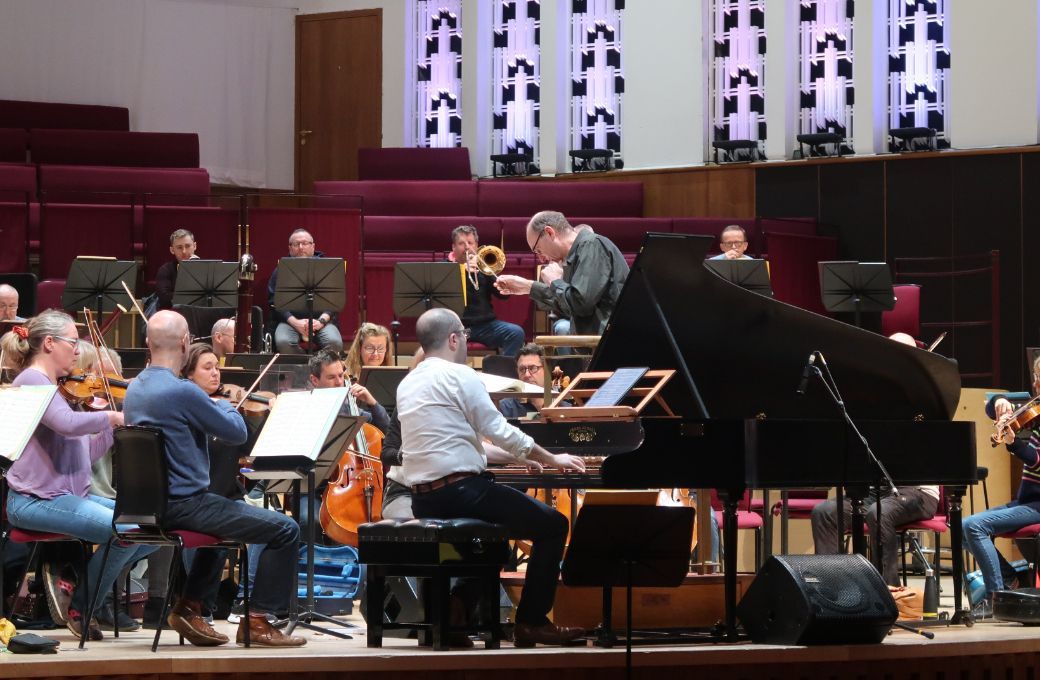Making a welcome return to the podium in Philharmonic Hall was the Royal Liverpool Philharmonic’s Principal Guest Conductor, the well respected Andrew Manze. Presenting a well balanced programme, beginning with Mozart’s three movement Paris Symphony, the evening started in style.

The symphony was a bright, sparkling and sprightly affair. The first movement was jaunty and brisk, Manze bringing very different colours to each of the subjects in the exposition, the overlapping phrases were stylish and articulate. Sensitive phrasing and dynamics made the second movement antiphony between the strings and woodwind a genuine musical conversation, whilst in the third the rests and phrasing provided the punctuation defining the musical paragraphs, which knitted together to make a commanding listen. With a modest body of strings, the textures had clarity and transparency; using just a light vibrato to warm the sound meant that real care had be taken to balance the sound.
Renowned harpsichord virtuoso Mahan Esfahani was the soloist in a world premiere from composer Gavin Bryars. Expanding the orchestra to include percussion and some extra brass, the strength of strings remained the same. This 27-minute concerto in one continuous movement, with a strong sense of tonality, is a work of one colour. Whilst there are variations in the hue, darkened with some dissonance, it has limited tempo variety, ranging from slow to moderate. Although rather cinematic in nature, to the average concert goer this could be too subtle to maintain one’s interest for its full duration. The initial three episodes are clearly defined and have very individual characters. From the fifth identifiable section, the music begins to wander and has an almost homogeneous character. The main interest was in the harpsichord part, which tended to have a constantly moving line over more homophonic orchestral textures. The limited programme notes mentioned that Bryars allowed Esfahani carte blanche to add in melodic decorations the same as in Baroque music.
Esfahani’s playing was superb throughout. Through the use of stops on his two manual harpsichord, he changed the dynamics and timbres of the instrument, while carefully considered writing from Bryars explored different sonorities — having both hands in the high register or both hands at the extremes of the keyboard for example. Manze was very skilled in balancing the delicate sound of the harpsichord against the orchestra, maintaining balance throughout. Bryars, who was in attendance, was warmly received. A short encore by Richard Rodney Bennett followed. Little Elegy; originally for piano, with its reflective mood and gently melancholy, this lightened the mood after the rather more sombre preceding concerto.
Sibelius’ First Symphony can be a tricky work to pull off convincingly. However, Manze knows all the musical complexities and emotional struggles intimately. He gave a performance which was utterly convincing and spoke immediately to the heart and soul. Expanding the body of strings, a richness shone through the RLPO, intensifying the expressiveness of the work. The tempi across the four movements were judiciously executed to provide moments of vivid rhythmic contrast. The range of emotions stretched from the reflective to the invigorating and from the dramatic to the embracing. The masterful phrasing was beautifully and expressively executed, enhancing moments of sheer anguish and solitude to the most dramatic manic ecstasy. This was the work of the season so far with such excellent playing from the orchestra.


